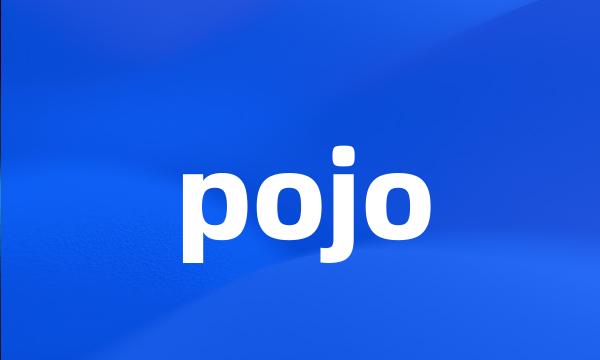pojo
- 网络对象
 pojo
pojo-
Break a big POJO based on data change concurrency and frequency etc.
基于数据的修改并发量和频率等内容来分解大的POJO。
-
Management model of stateful POJO based on inversion of control
基于反转控制的有态POJO管理模型
-
There are two ways to build a composite POJO at your service layer .
有两种方式在服务层构建组合POJO。
-
Our Web service is basically a pojo ( interface and implementation ) .
我们的Web服务基本上就是一个pojo(接口和实现)。
-
These scenarios give meaningful use cases that demonstrate the need for POJO components .
这些场景就是相当有意义的用例,说明了对POJO的需求。
-
Any POJO that implements the resource is known as the resource class .
实现资源的POJO被称为资源类。
-
We have chosen to consume a POJO to keep things simple .
出于简单考虑,本用例中我们选择消费一个POJO。
-
Any POJO can become a Web service using the WSAS plug-in .
所有POJO都可以成为使用WSAS插件的Web服务。
-
It is implemented as a POJO with methods to get and set the attribute values .
它作为一个POJO实现,带有获取和设置属性值的方法。
-
The programming model also defines a detachment model for the POJO ( Entity ) objects .
该编程模型还定义了POJO(实体)对象的分离模型。
-
Next , you will create your Session Bean POJO
接下来将创建会话BeanPOJO
-
All that having been said , the domain objects still retain a lot of their POJO nature .
虽然有上述各种情况,域对象依然保留许多POJO特性。
-
A root resource class is a POJO annotated with the @ PATH annotation .
root资源类是带有@PATH注释的POJO。
-
Now that the POJO is complete , it 's time to write the serialization code .
既然POJO已经创建完成了,下面就该编写序列化代码了。
-
This Automobile class is a simple plain old Java object ( POJO ) that contains data used by the application .
这个Automobile类是一个简单的Java对象(plainoldJavaobject,POJO),包含了应用程序所用的数据。
-
However , while sharing an overall philosophy , the two frameworks use very different approaches to deliver POJO services .
尽管使用了同样的设计哲学,这两个框架使用两种不同的方法为POJO提供服务。
-
First , the COBOL client is not affected by changing the POJO location or package name .
首先,改变POJO位置或软件包的名字不会影响COBOL客户端。
-
It is not intended to describe all the scenarios around SCA POJO usage .
但本文并不打算描述所有与SCAPOJO使用有关的场景。
-
Seam wires POJO components together using a popular design pattern known as " dependency injection "( DI ) .
Seam通过使用一个流行的、被称作依赖注入(DI)的设计模式联结所有POJO组件。
-
The Book class is just a POJO ( plain old Java object ) that has a single field : name .
Book类仅是一个POJO(Java原生类对象),拥有一个单一字段:name。
-
Using a plain old Java object ( POJO ), where you can write Java logic to manipulate the message
使用传统的Java对象(POJO),您可以在其中编写Java逻辑,以便对消息进行操作
-
So , why would anyone want to use POJO components when deploying in an EJB3 container ?
所以当在EJB3容器中进行部署时,为什么每个人都想使用POJO组件?
-
You should transfer to the UI a composite POJO instead of individual POJOs to have better network performance .
你应该向UI传递一个组合POJO而不是独立的POJO以获得更好的网络性能。
-
Since activities are POJOs , they could be tested as POJO , outside of the process they are applied .
因为活动是POJO,它们可以在使用它们的应用之外作为POJO来测试。
-
You 've essentially got declarative transactions on a POJO , an extremely useful capability for enterprise applications .
您现在已经得到了关于POJO的声明性事务,这对企业应用程序非常有用。
-
You also can mark a read-only POJO immutable as a tuning hint .
将只读POJO标识为不可更改的(immutable)也是一个调优点。
-
Recall that deserialization is the process of translating an XML document into a POJO .
回想一下,反序列化是将XML文档转换成POJO的过程。
-
You should follow a well-defined set of expectations when you create a POJO to represent a domain object .
在创建POJO以表示域对象时,您应当遵循定义好的一组期望。
-
Each activity is a POJO and is completely unaware of any infrastructure / controller components that manage it .
每个活动是一个POJO而且完全不知道任何管理它的底层架构/控制器组件。
-
The read method takes two parameters : the class of the POJO and the File object that represents the XML file containing the data .
read方法有两个参数:POJO的类和File对象,后者代表包含数据的XML文件。
